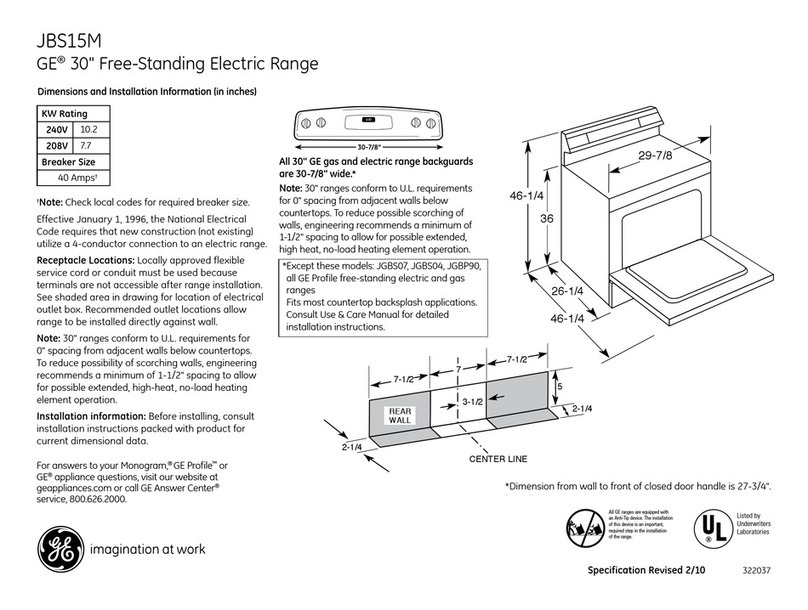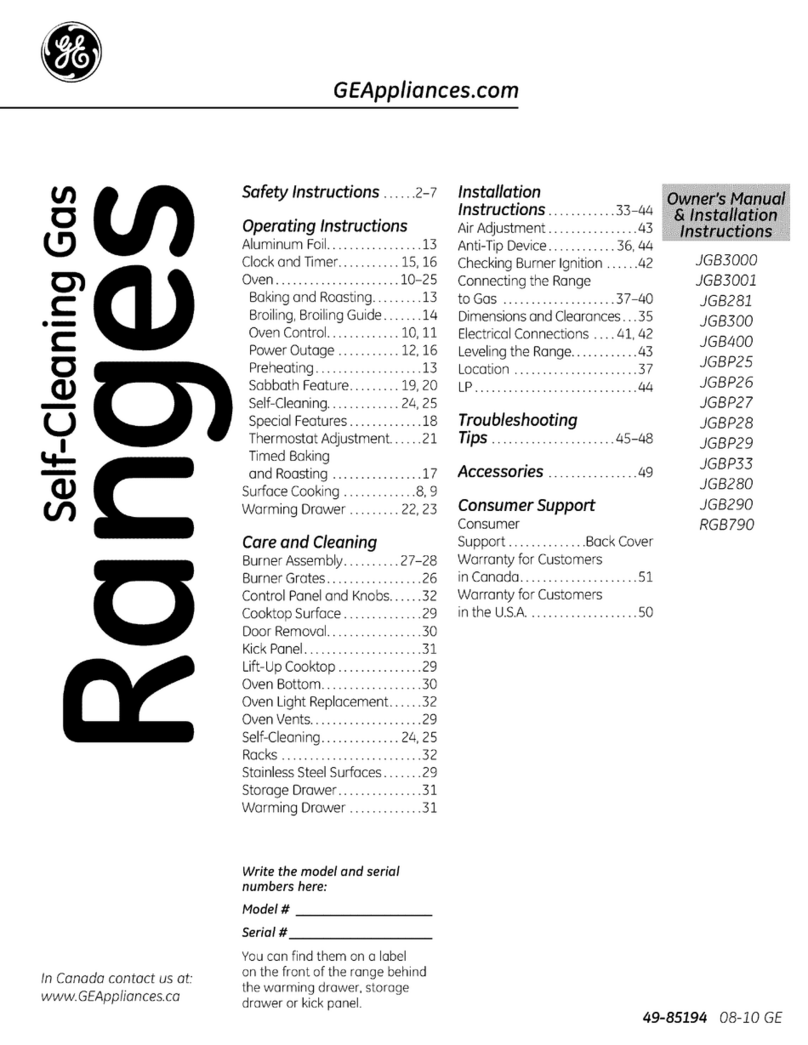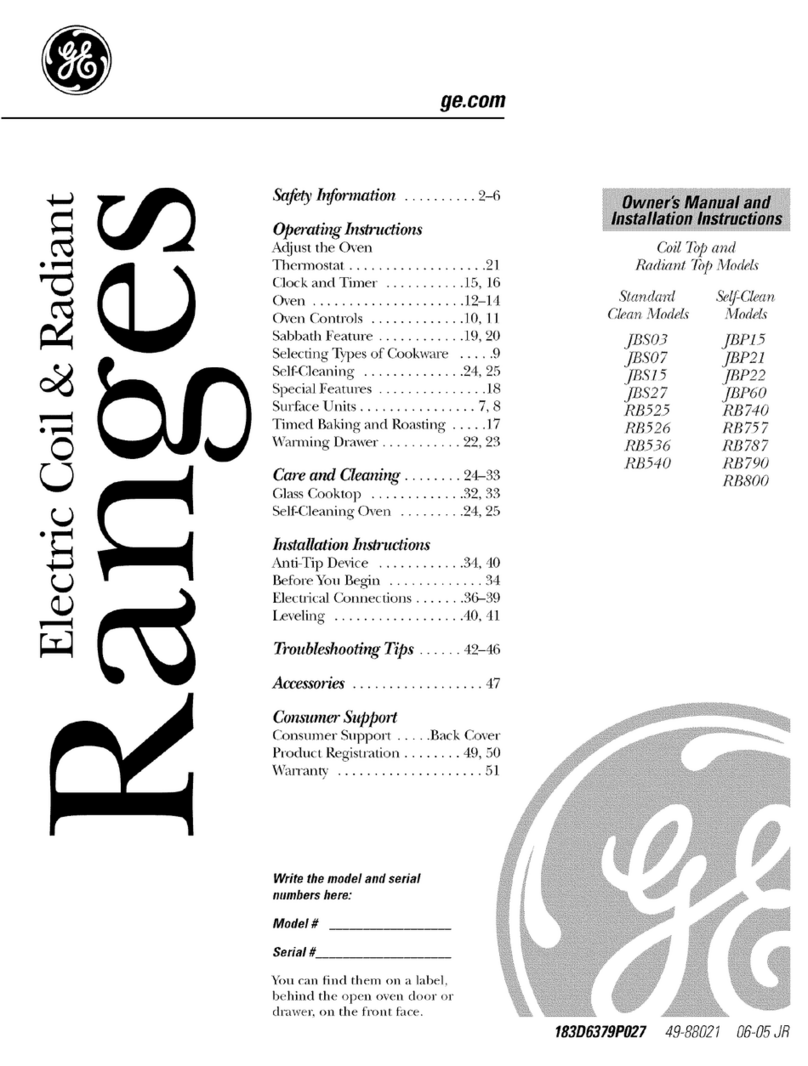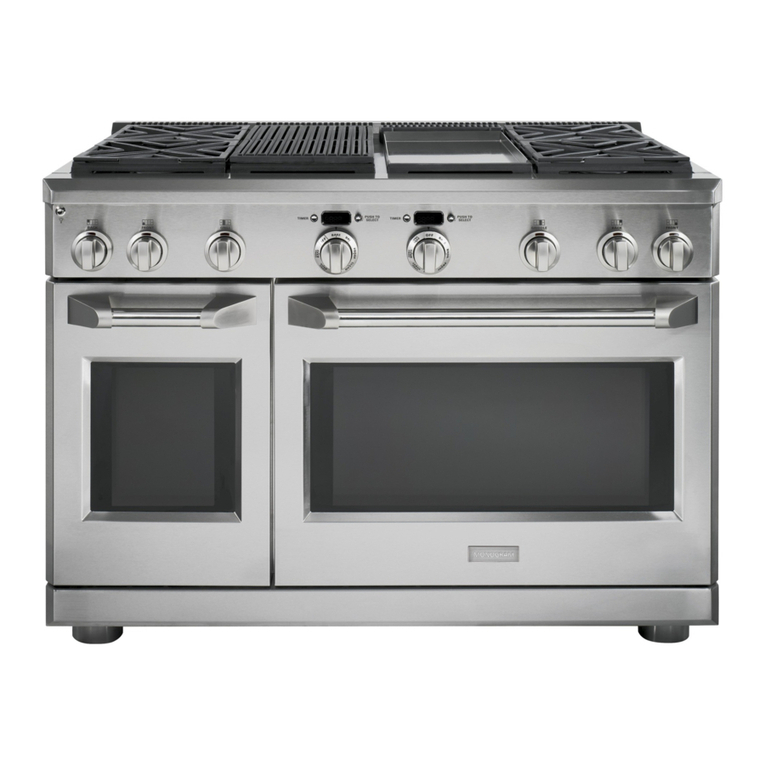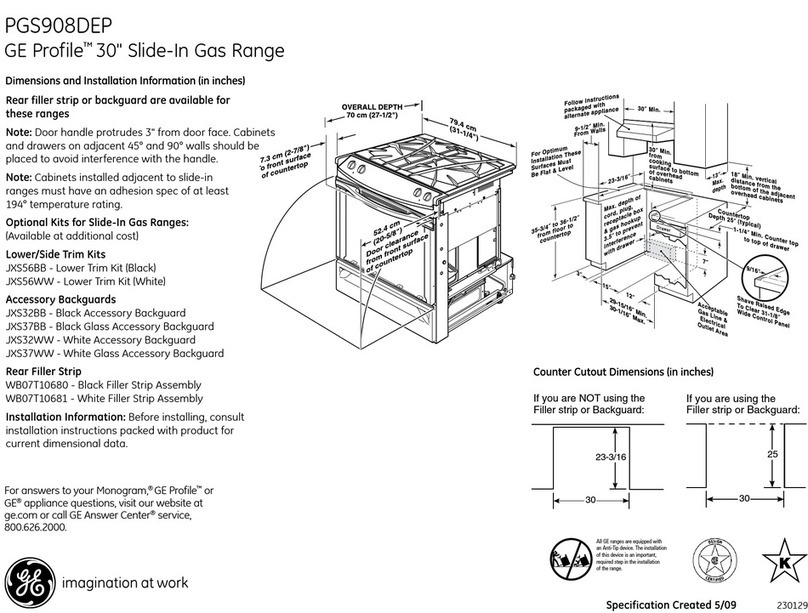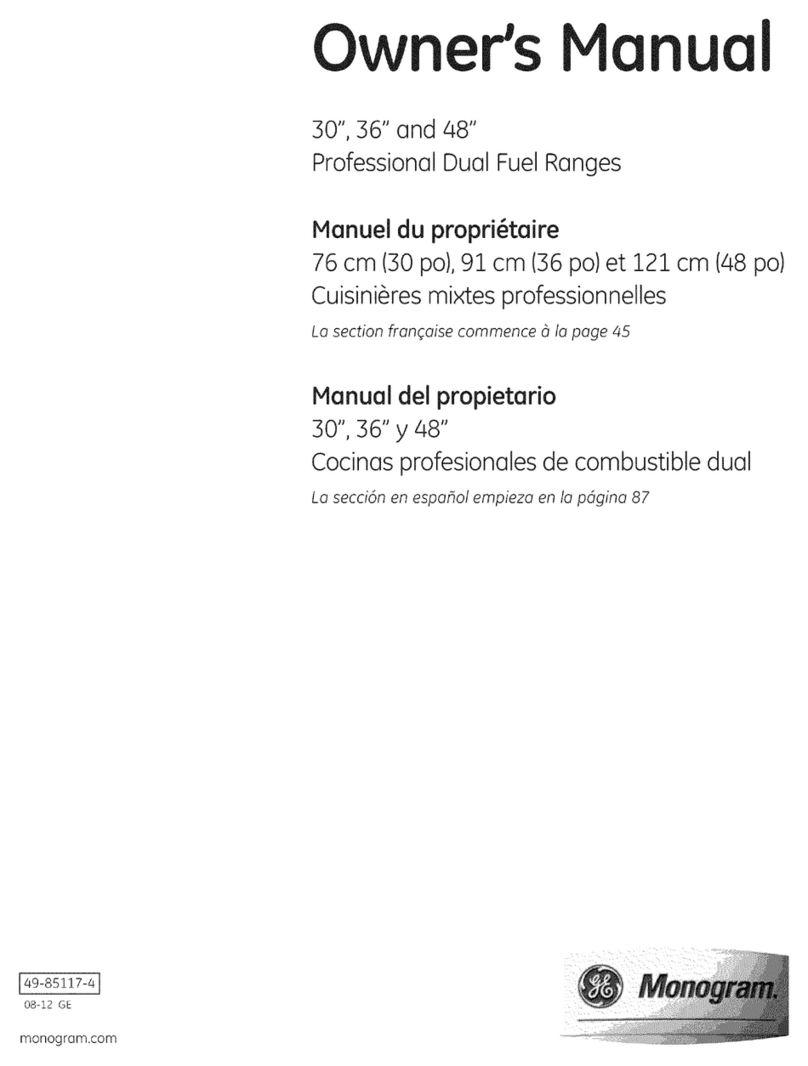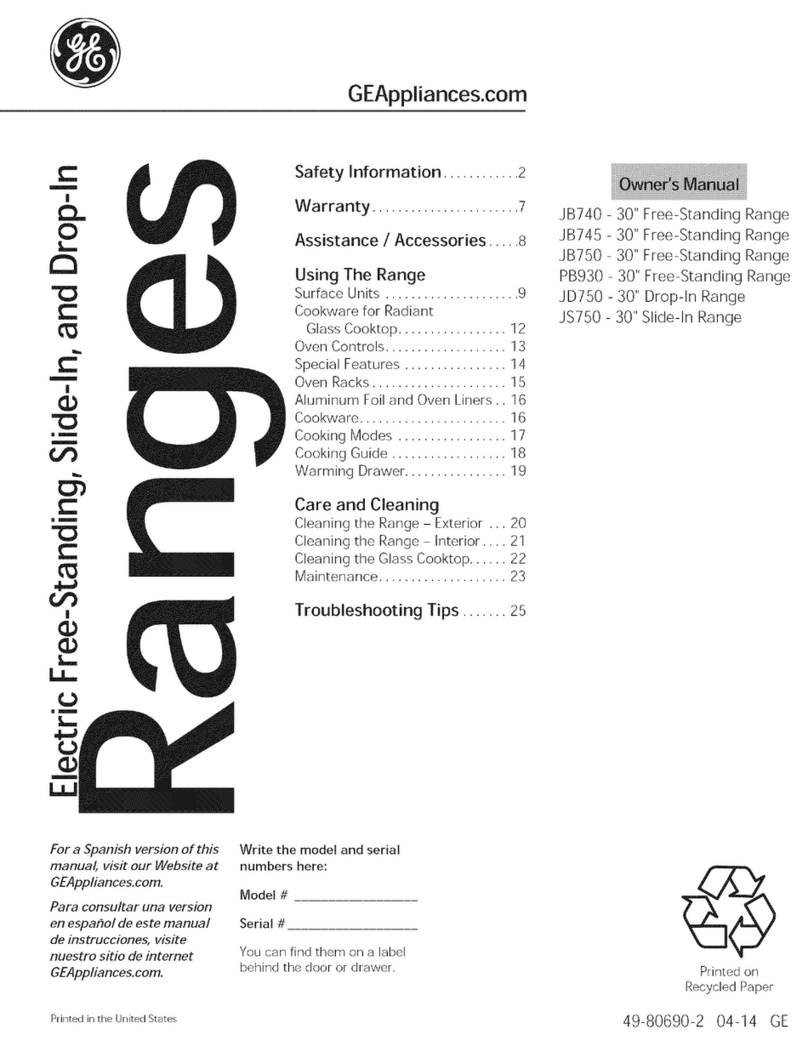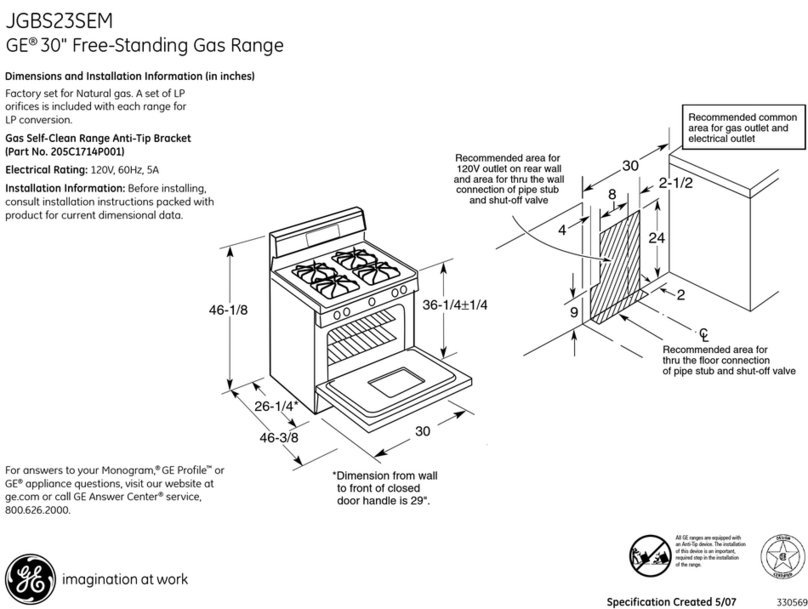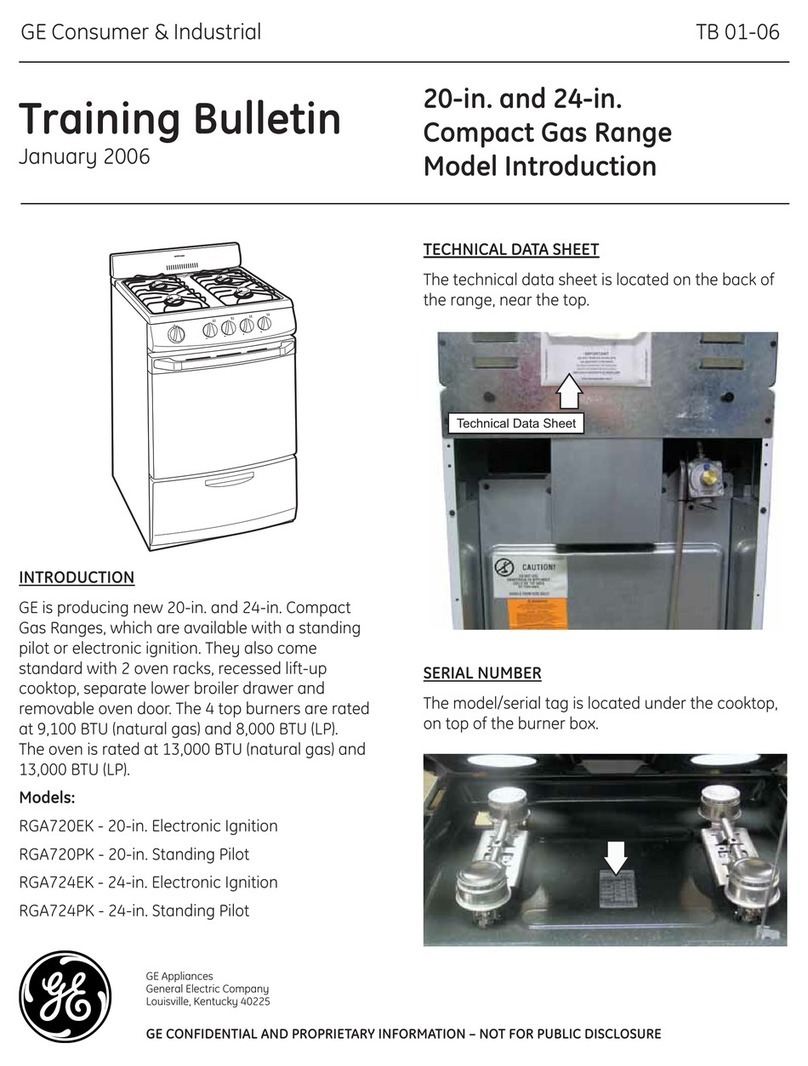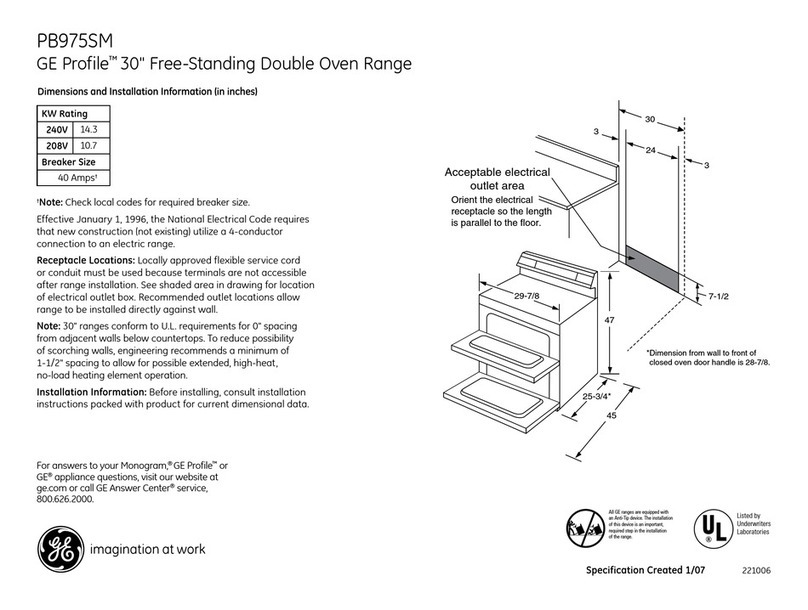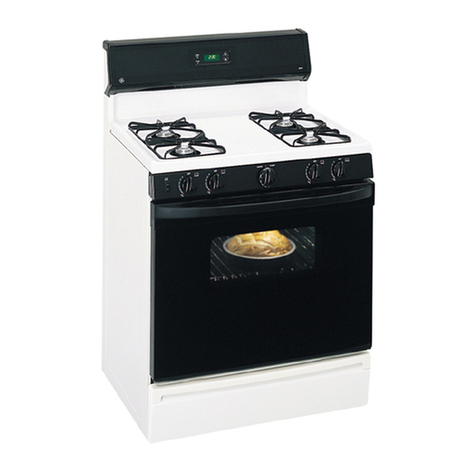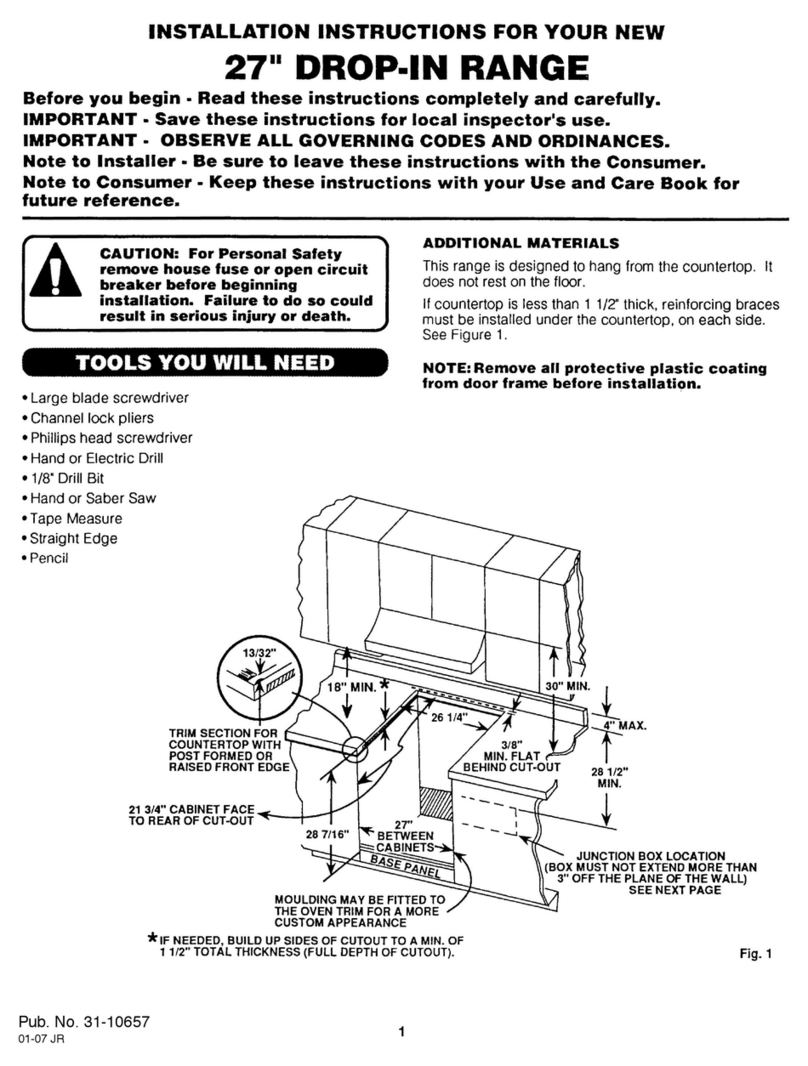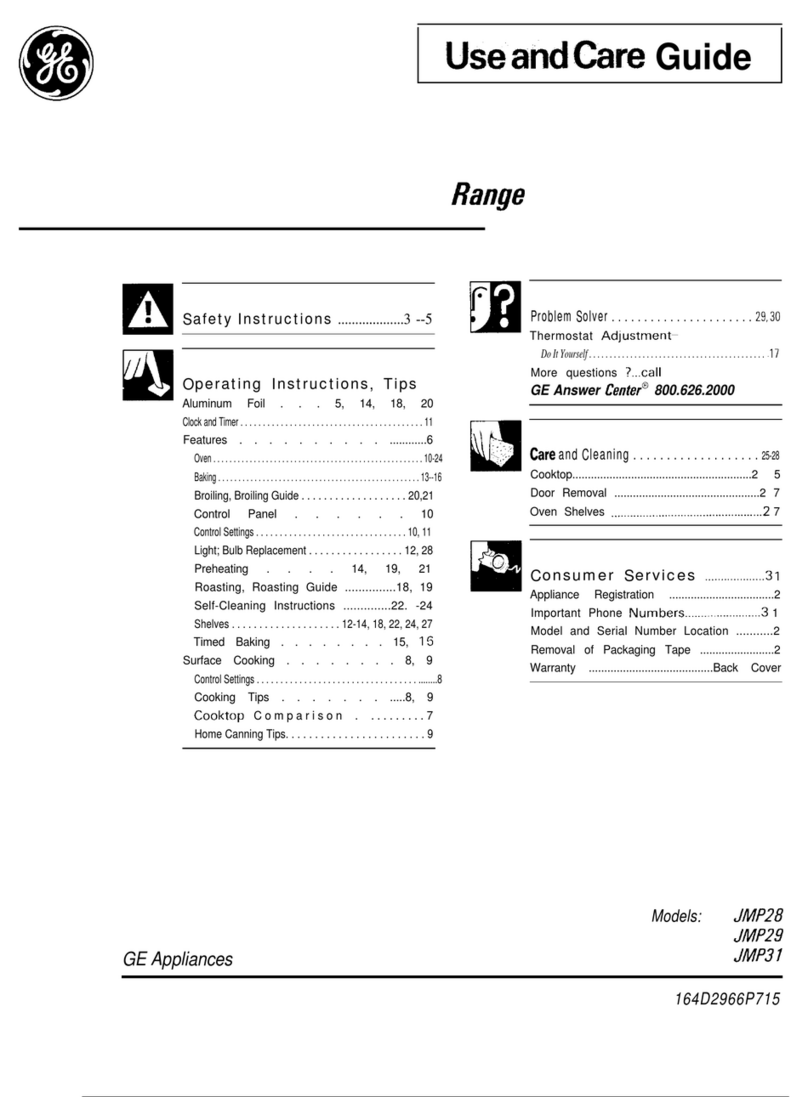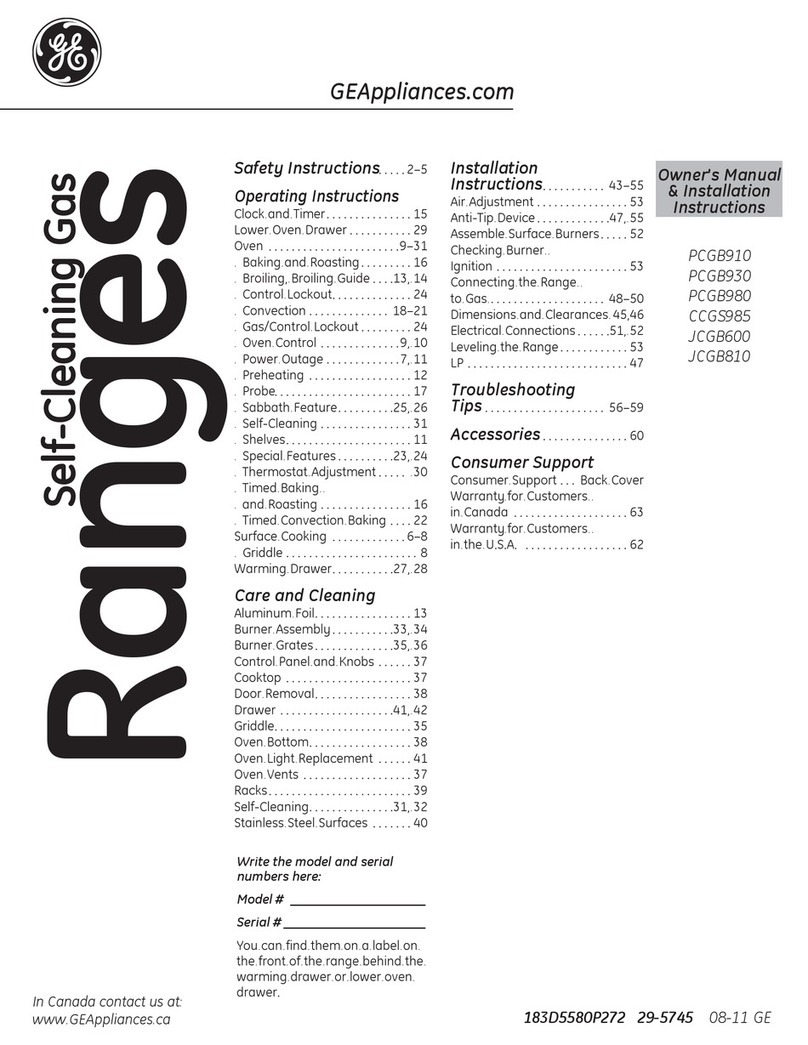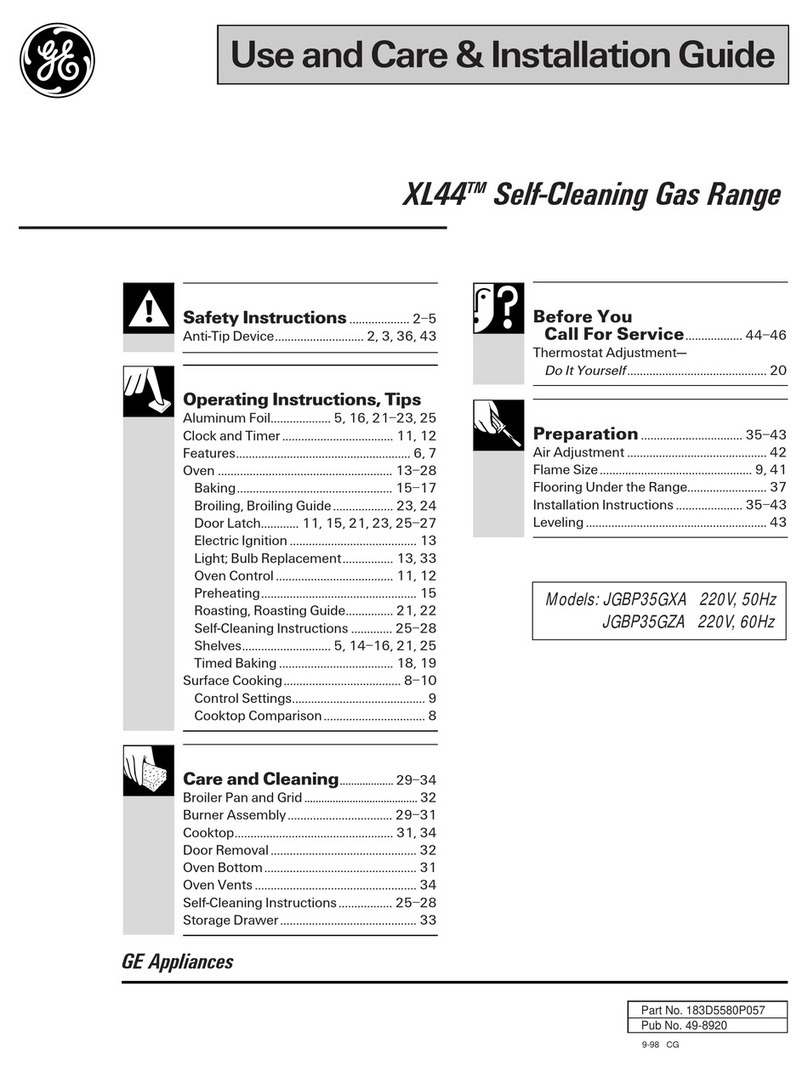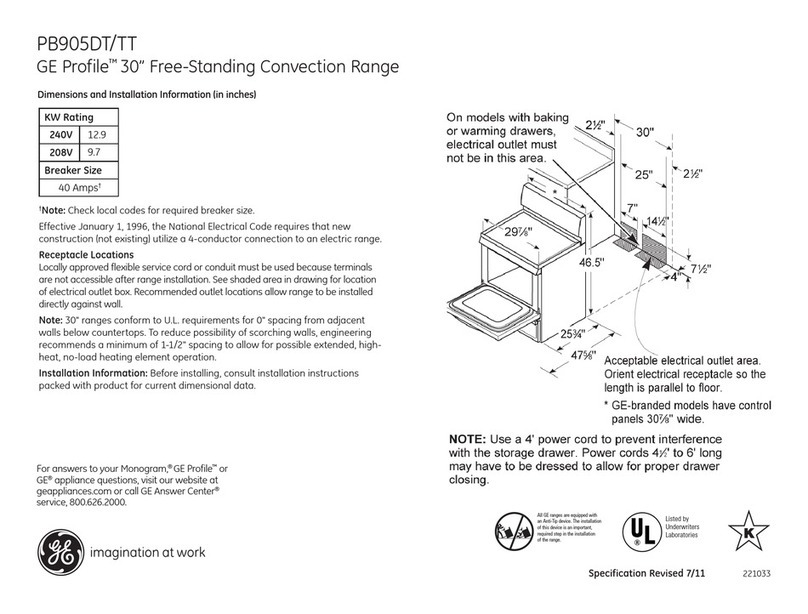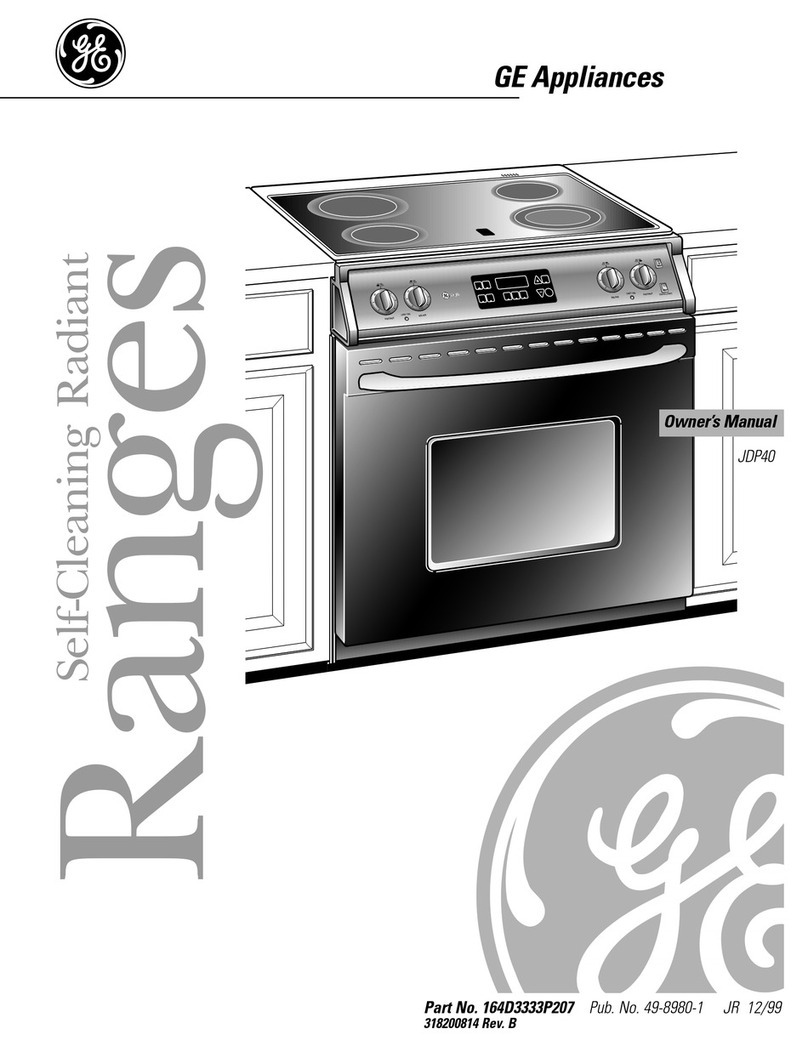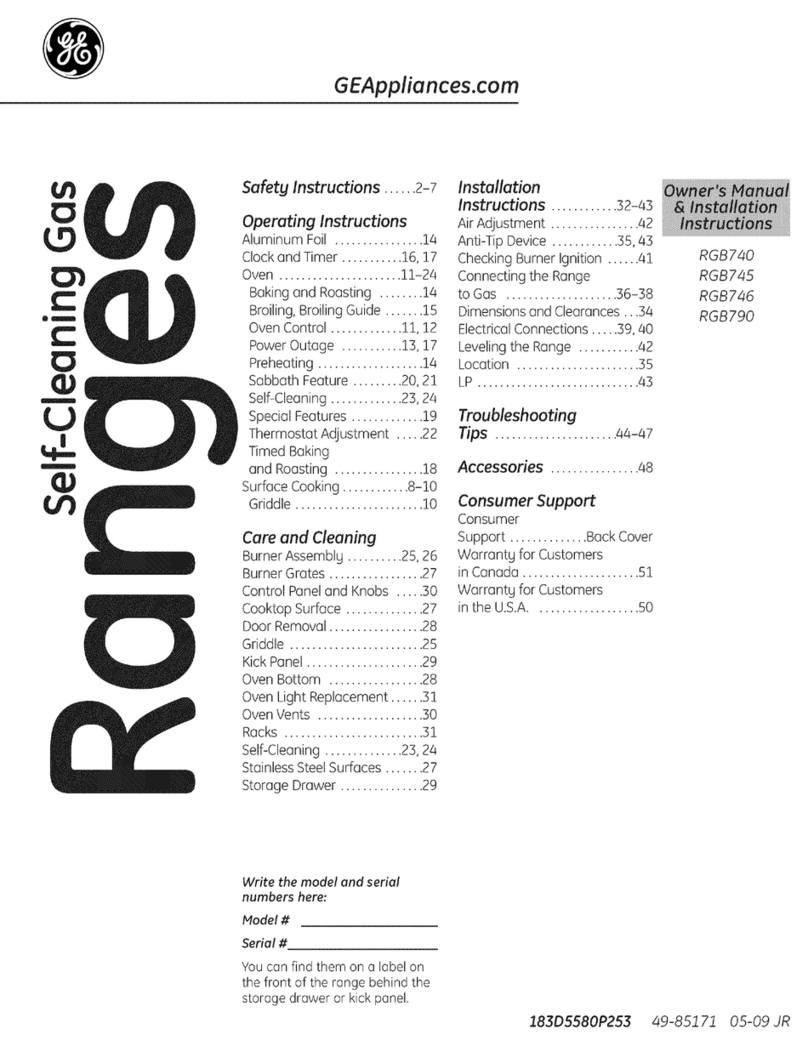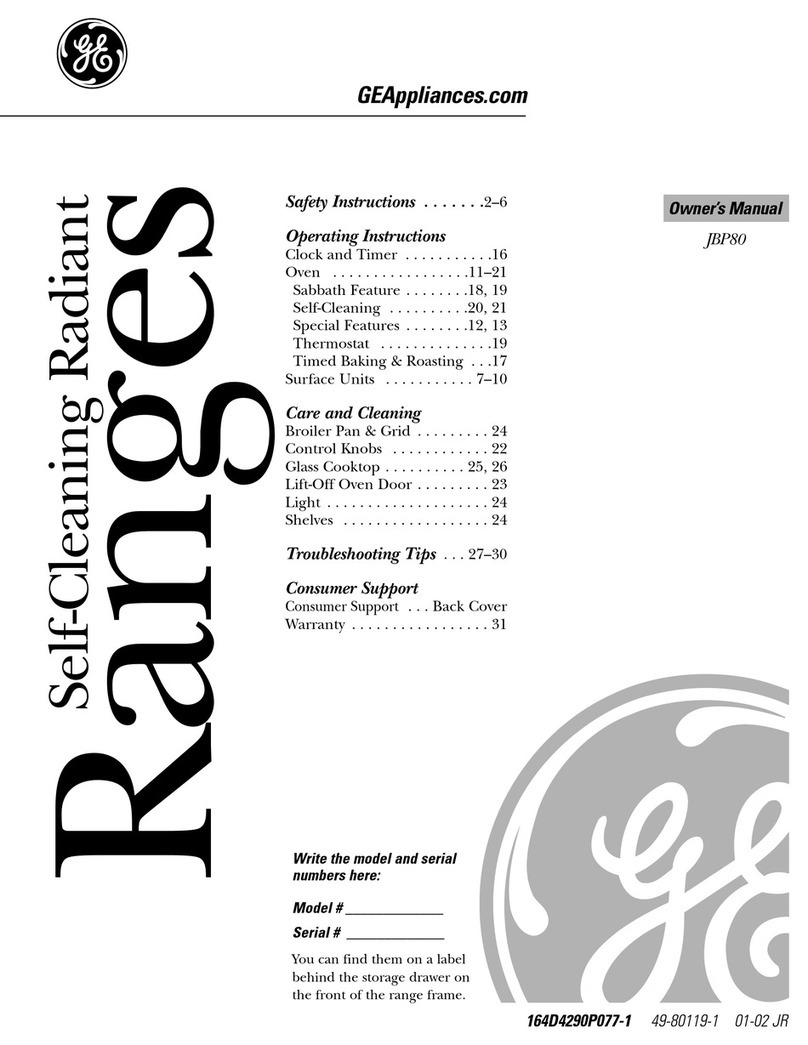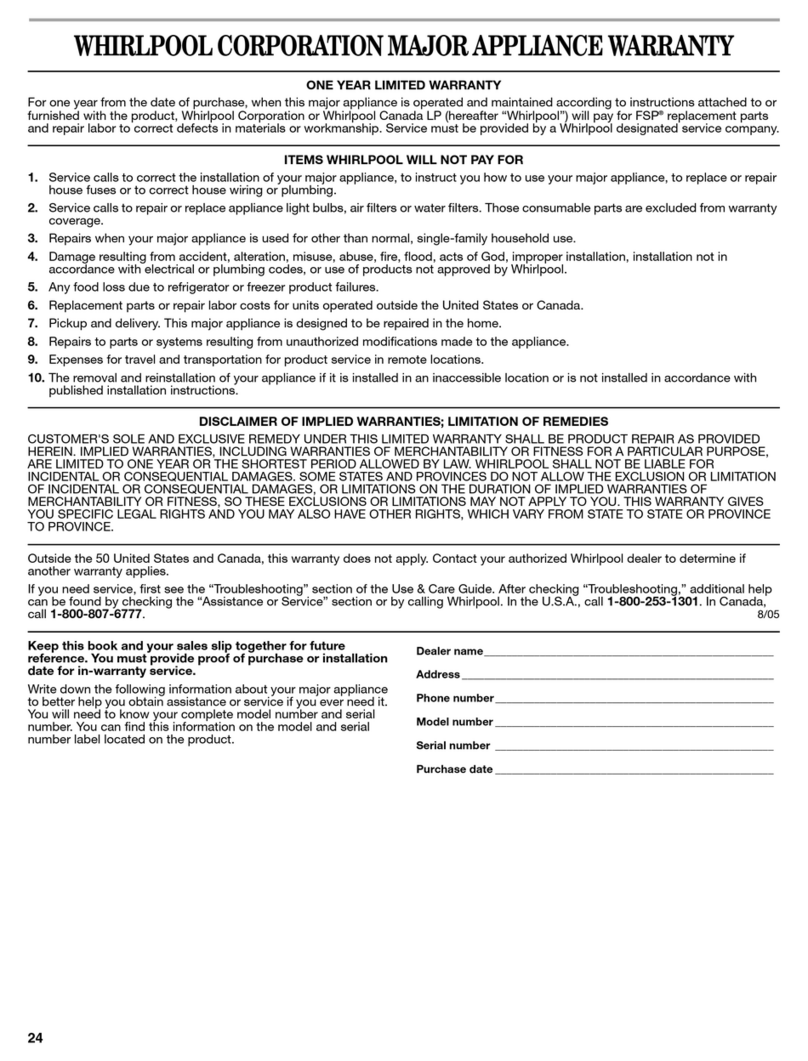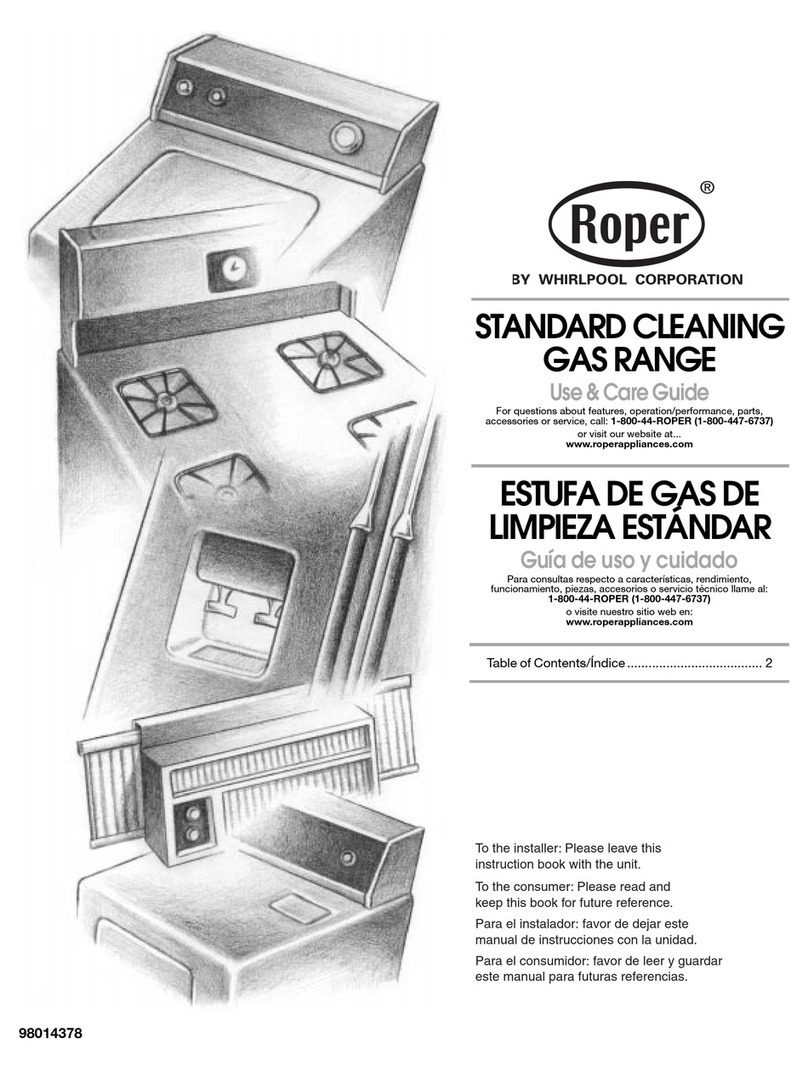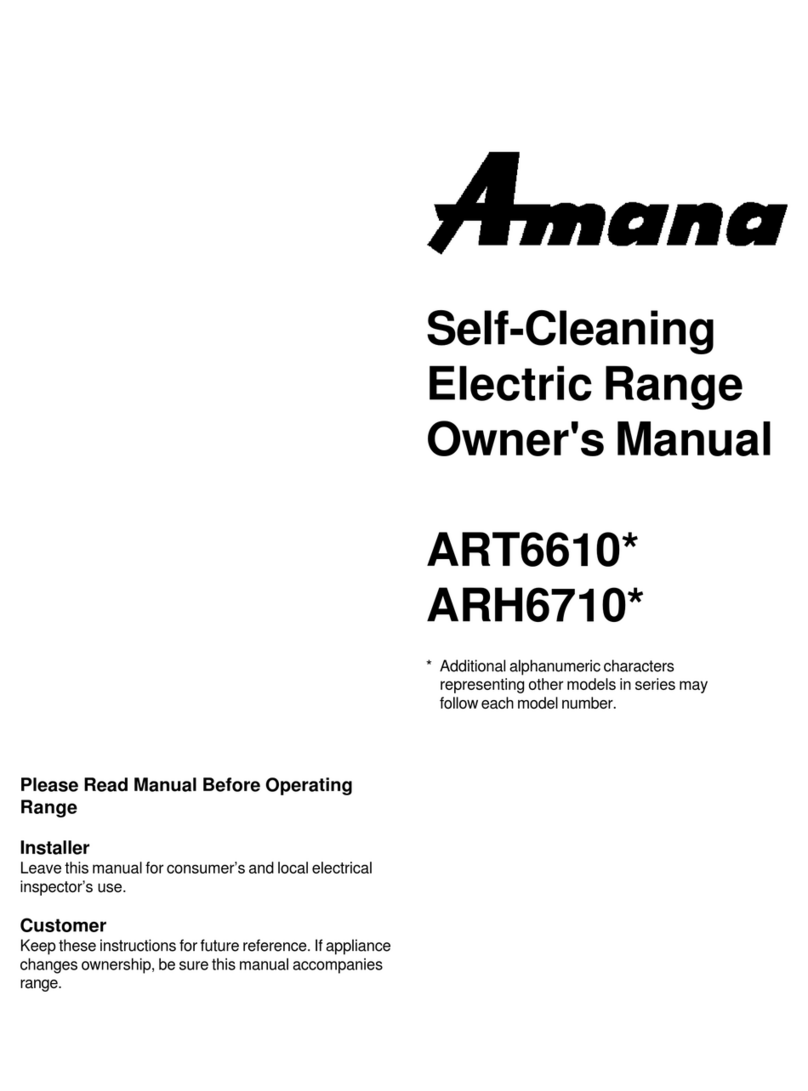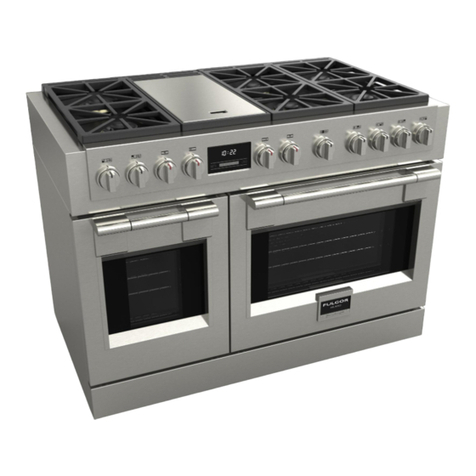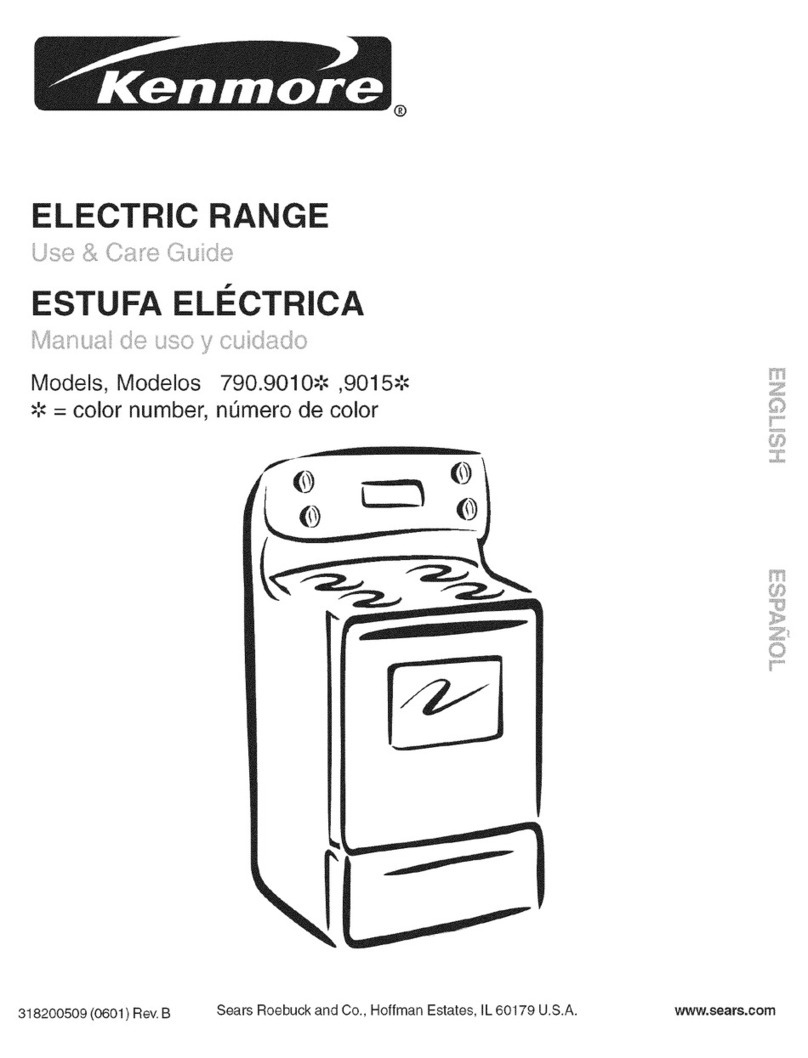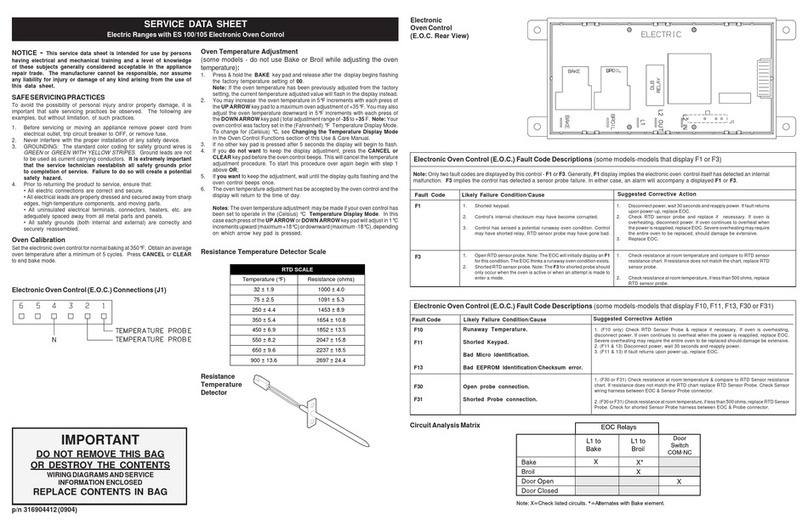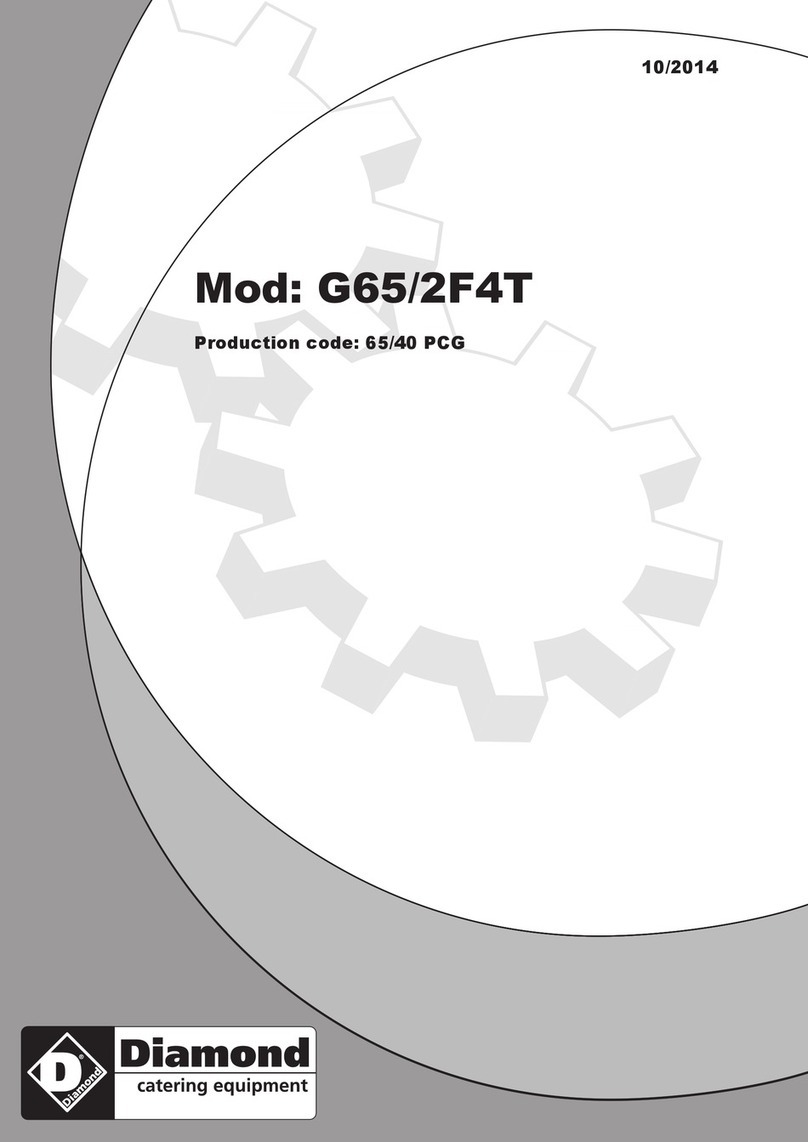ge.com
COOK MEAT AND POULTRY THOROUGHLY…
Cook m at and poultry thoroughly—m at to at l ast an INTERNAL t mp ratur of 160°F and poultry
to at l ast an INTERNAL t mp ratur of 180°F. Cooking to th s t mp ratur s usually prot cts against
foodborn illn ss.
■ Never wear loose-fitting or hanging garments
while using the appliance. Be careful when
reaching for items stored over the range.
Flammable material could be ignited if brought
in contact with hot surface units or heating
elements and may cause severe burns.
■ Use only dry pot holders—moist or damp pot
holders on hot surfaces may result in burns
from steam. Do not let pot holders touch hot
surface units or heating elements. Do not use
a towel or other bulky cloth.
■ For your safety, never use your appliance for
warming or heating the room.
■ Do not let cooking grease or other flammable
materials accumulate in or near the range.
■ Do not use water on grease fires. Never pick
up a flaming pan. Turn the controls off.
Smother a flaming pan on a surface unit by
covering the pan completely with a well-fitting
lid, cookie sheet or flat tray. Use a multi-
purpose dry chemical or foam-type fire
extinguisher.
■Flaming grease outside a pan can be put out
by covering it with baking soda or, if available,
by using a multi-purpose dry chemical or
foam-type fire extinguisher.
■Flame in the upper oven or lower oven drawer
can be smothered completely by closing the
oven door or drawer and turning the oven off,
or by using a multi-purpose dry chemical or
foam-type fire extinguisher.
■Be sure all packaging materials are
removed from the range before operating
it to prevent fire or smoke damage should
the packaging material ignite.
■After prolonged use of a range, high floor
temperatures may result and many floor
coverings will not withstand this kind of use.
Never install the range over vinyl tile or
linoleum that cannot withstand such type
of use. Never install it directly over interior
kitchen carpeting.
■ Do not touch the surface units, the heating
elements or the interior surface of the oven.
These surfaces may be hot enough to burn
even though they are dark in color. During and
after use, do not touch, or let clothing or other
flammable materials contact, the surface
units, areas nearby the surface units or any
interior area of the oven; allow sufficient time
for cooling first.
■Potentially hot surfaces include the cooktop,
areas facing the cooktop, oven vent opening,
surfaces near the opening, crevices around
the oven door and metal trim parts above
the door.
■REMEMBER : The inside surface of the oven
may be hot when the door is opened.
■ Do not store or use combustible materials,
gasoline or other flammable vapors and
liquids in the vicinity of this or any other
appliance.
■ Keep the hood and grease filters clean
to maintain good venting and to avoid
grease fires.
■ Never block the vents (air openings) of the
range. They provide the air inlet and outlet
that are necessary for the range to operate
properly. Air openings are located at the rear
of the cooktop, at the top and bottom of the
oven door, and at the bottom of the range
under the lower oven drawer.
■ Teach children not to play with the controls
or any other part of the range.
■ Always keep dish towels, dish cloths, pot
holders and other linens a safe distance from
your range.
■ Always keep wooden and plastic utensils and
canned food a safe distance from your range.
■ Always keep combustible wall coverings,
curtains or drapes a safe distance from
your range.
WARNING!
SAFETY PRECAUTIONS
3
Operating
Instructions Care and Cleaning Installation
Instructions
Troubleshooting
Tips
Safety Instructions Consumer Support


